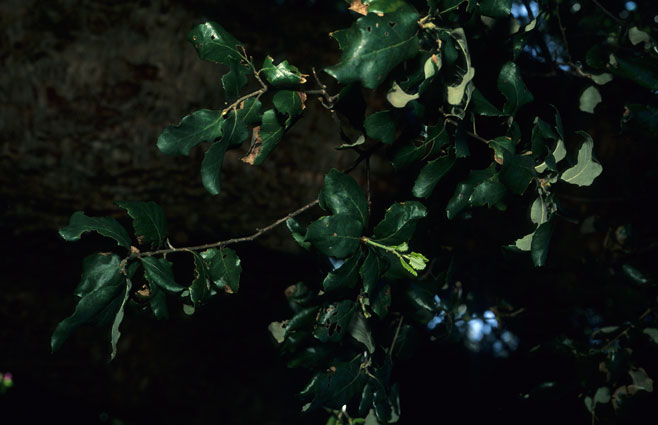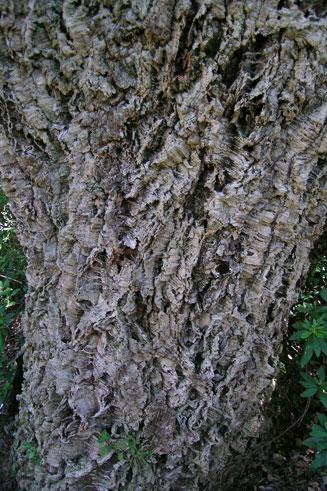|
Quercus suber (Cork Oak) Life
> eukaryotes >
Archaeoplastida >
Chloroplastida
>
Charophyta > Streptophytina > Plantae (land plants)
> Tracheophyta (vascular plants) > Euphyllophyta > Lignophyta (woody plants)
> Spermatophyta (seed plants) > Angiospermae (flowering
plants) > Eudicotyledons > Core Eudicots > Rosids >
Eurosid I > Order: Fagales > Family: Fagaceae
> Genus: Quercus
 |
|
Quercus suber. [photo
H.G.
Robertson, Iziko ©] |
 |
 |
|
Quercus suber, Arderne Gardens, Cape Town,
South Africa. [photos
H.G.
Robertson, Iziko ©] |
Originates from the Mediterranean region and is grown
commercially for the thick cork bark which is harvested mainly for producing
corks for wine bottles. Portugal is the world's major producer of cork products.
Cork Oaks are native to the Mediterranean region where
they occur in open woodlands on hills and lower slopes. They form a thick
cork bark which is harvested mainly for the manufacture of wine bottle
corks although the cork also makes a good heat and electrical insulator so is
used for gaskets in engines and for insulative materials used in home interiors.
By cutting off only the outer, dead corky bark, the tree is able to regenerate
new cork tissue from the underlying live bark. In this way it is possible to cut
off cork from a tree about every 10 years and the tree itself is able to live
for about 150 years.
Cork Oaks are grown mainly in Portugal where there are
over 60 square kilometers of cork orchards. Not surprisingly, cork products are
Portugal's main export. Spain also grows cork commercially but to a much lesser
extent than Portugal. There have been attempts to grow Cork Oaks
commercially in other parts of the world but these other countries have not been
able to compete with Portugal in terms of skillfulness and cheapness of labour.
Cheap plastic stoppers for wine bottles are to some extent a threat to the cork
industry but for the better wines, cork stoppers are still preferred.
References
-
Sauer, J.D. 1993. Historical geography of
crop plants - a select roster. CRC Press, Boca Raton, Florida.
Text by Hamish G. Robertson
|
